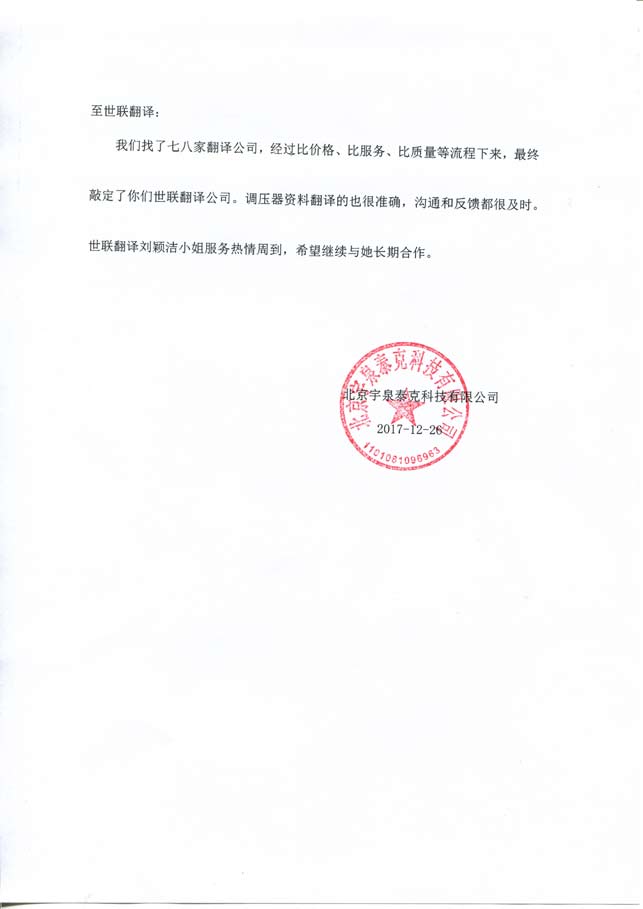北京宇泉泰克科技有限公司致世联翻译一封信
时间:2018-02-08 08:26 来源:未知 作者:dongli 点击:次
至世联翻译:
我们找了七八家翻译公司,经过比价格、比服务、比质量等流程下来,最终敲定了你们世联翻译公司。调压器资料翻译的也很准确,沟通和反馈都很及时。世联翻译刘颖洁小姐服务热情周到,希望继续与她长期合作。
 |

至世联翻译:
我们找了七八家翻译公司,经过比价格、比服务、比质量等流程下来,最终敲定了你们世联翻译公司。调压器资料翻译的也很准确,沟通和反馈都很及时。世联翻译刘颖洁小姐服务热情周到,希望继续与她长期合作。
 |